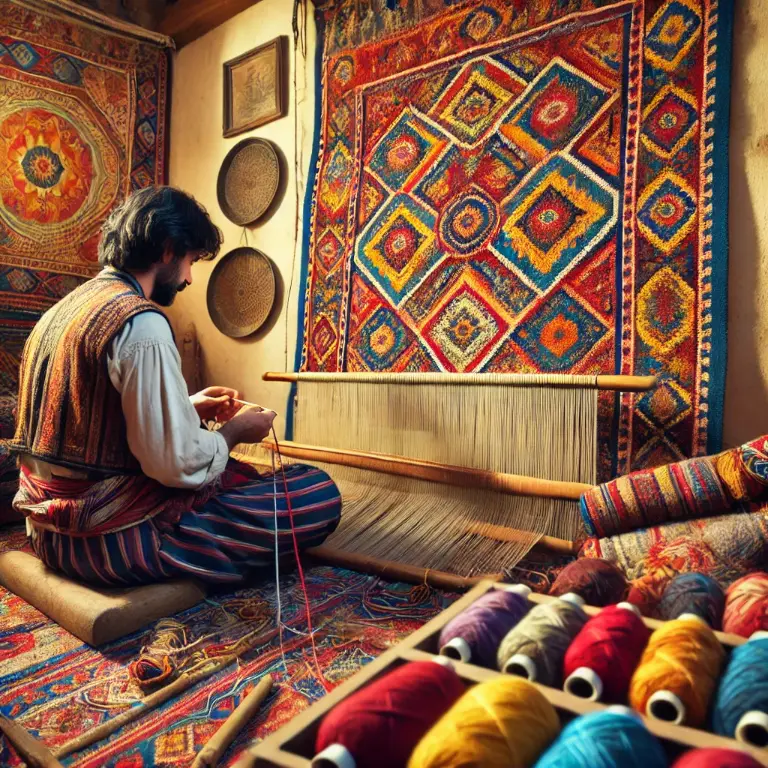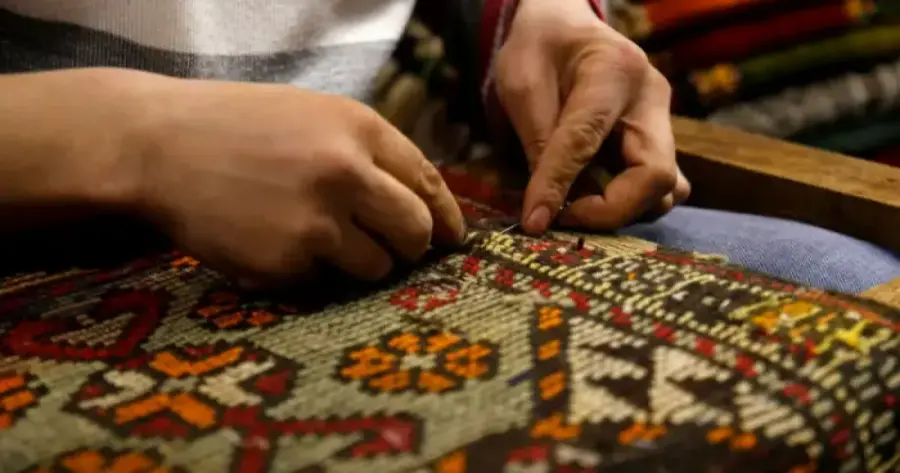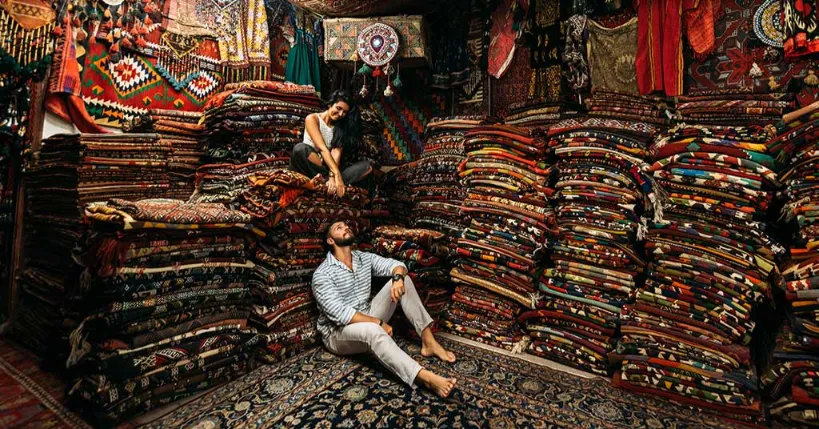Not sure which Turkish carpet is actually original? Finding a real item might be challenging, considering the abundance of lovely selections and vendors. This book is meant to help you sort through the uncertainty and make a wise decision. From knowing their rich history and complex workmanship to useful buying advice and guarantees you receive the real stuff, we will lead you through the fundamentals of spotting real authentic Turkish carpets. Whether you are a novice buyer or an experienced collector, this guide will provide you with the information you need to boldly choose a Turkish carpet that is both real and appealing.
Knowing Authentic Turkish carpets
Turkish carpets are woven tapestry of history, culture, and artistry rather than just floor coverings. From Anatolia’s rocky terrain to Istanbul’s elegant designs, every area of Turkey has a unique character. For example, Oushak carpets are well-known for their gentle colors and big floral patterns. In contrast, Hereke carpets—often including over a million knots per square meter—are renowned for its exceedingly fine silk and detailed designs. Understanding these local styles will enable you to value the variety and workmanship of Turkish carpets.

How to Recognise Real Turkish Carpets?
Though difficult, finding a real Turkish carpet may be rather fulfilling. Here’s how to find the real deal:
Handwoven vs. Machine-Made
Authentic Turkish carpets are handwoven, usually using a unique double-knot technique known as the “Ghiordes knot.” Machine-made carpets Examining the back of a carpet may help you to determine whether it is handwoven; check for small pattern changes and knot abnormalities. A variety of tools are needed in the construction of a handmade rug. A loom, a horizontal or upright framework, is needed to mount the vertical warps into which the pile nodes are knotted, and one or more shoots of horizontal wefts are woven (“shot”) in after each row of knots in order to further stabilize the fabric. Wefts can be either undyed or dyed, mostly in red and blue.

Knot Density and Weaving Techniques
High knot density usually signifies improved quality in weaving techniques. A more complex and durable carpet results from more knots per square inch. To verify, softly bend the carpet; if the weave is thick, the base will be difficult to find.
Materials
Sheep’s wool is the most frequently used pile material in a Turkish rug because it is soft, durable, easy to work with and not too expensive. It is less susceptible to dirt than cotton, does not react electrostatically, and insulates against both heat and cold Natural materials including wool, silk, and cotton make up authentic Turkish carpets. While silk carpets are more opulent and complex but also more delicate, wool is most often used and treasured for its warmth and durability.
Natural vs. Synthetic Dyes
Authentic carpets get their rich, deep hues that age wonderfully over time from natural dyes obtained from plants, roots, and insects, unlike synthetic ones. Conversely, synthetic colors can fade rapidly and seem unduly brilliant. In 1856, the English chemist William Henry Perkin invented the first aniline dye, mauveine. A variety of other synthetic dyes were invented thereafter.
Patterns and Symbols
Traditional Turkish patterns frequently feature geometric forms, floral motifs, and symbolic designs expressing themes including protection, fertility, and nature. Understanding these trends will enable you to tell original works from reproductions.
Shopping Tips for Finding Authentic Carpets
Ready for purchase? Remember these guidelines to guarantee you are acquiring a real work of art:
Research the many varieties of Turkish carpets, the typical pricing ranges, and reliable vendors before you start shopping. You are less prone to be mislead the more knowledge you possess.
Select Reputable Sellers: Search for reputable stores with solid ratings and a history of selling original items. In marketplaces, it’s tempting to be caught in the moment; nevertheless, a respectable vendor would include details about the carpet’s materials, age, and source.
Ask the Correct Questions: Ask specific, thorough questions without thinking Twice. The carpet was created somewhere. From what sources were used? Its age is _____. A skilled vendor will be pleased to provide the background on every item.
Look at the rear of the carpet, the weaving quality, and the dye’s evenness. Because they are handcrafted, authentic carpets will have minor flaws.
Value against Price: Real Turkish carpets are an investment. A price that looks too good to be true is that. Though you should be ready to haggle, remember that real quality comes with a price.
Where should one get Turkish carpets?
Turkey has great stores for carpets all around. The Grand Bazaar in Istanbul is renowned for its maze of stores providing a vast range of choices. See smaller cities like Konya or the Cappadocia areas for a more local experience; you can purchase straight from artists and even see the carpets being made. If you enjoy online buying, purchase from a reliable website with decent return policies.
Once you have selected your ideal carpet, you will wish to maintain it looking great. These pointers apply here.
Regarding cleaning, stay away from strong chemicals. For wool carpets, use mild soap and water; for silk carpets, pay expert cleaning first priority.
To guarantee even wear, routinely rotate your carpet; avoid putting it in direct sunlight to minimize fading.
Should you choose to store your carpet, roll it (never fold) and preserve it in a dry, cold environment to prevent damage.
Typical Mistakes to Steer Clear From
Carpet shopping may be intimidating, and one might easily become caught up in the thrill. High-pressure sales strategies and vendors with seemingly too generous prices should be avoided. Always compare choices, slow down, and rely on your gut feeling.
Final Thought
Purchasing a Turkish carpet is more than simply a purchase; it’s a little of artistry, history, and culture you’re adding into your house. Following this instruction will help you not only locate a real work but also increase your respect of Turkish weaving’s skill. So move forth and let your ideal item to discover you—dive into the vibrant world of Turkish carpets. Happy shopping!

